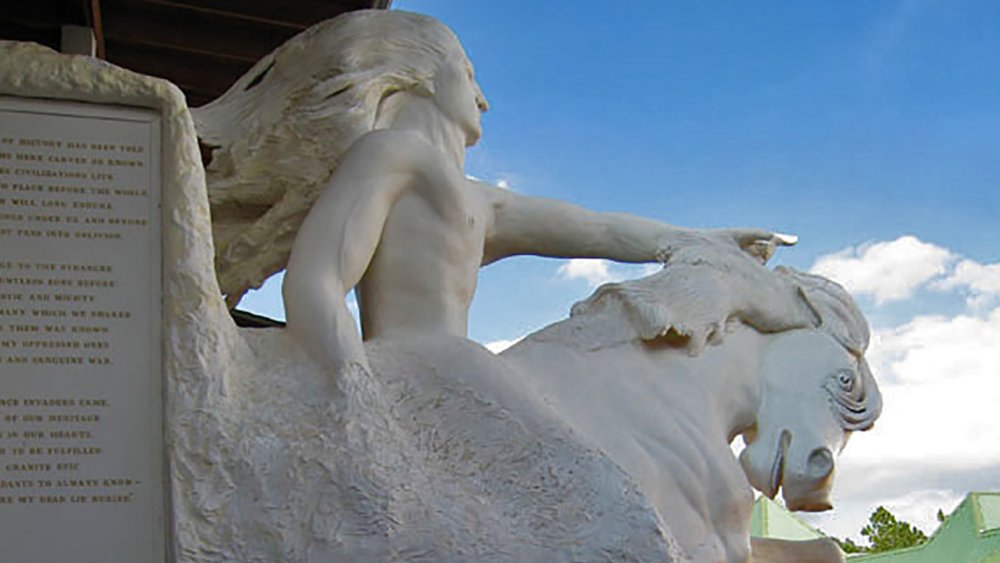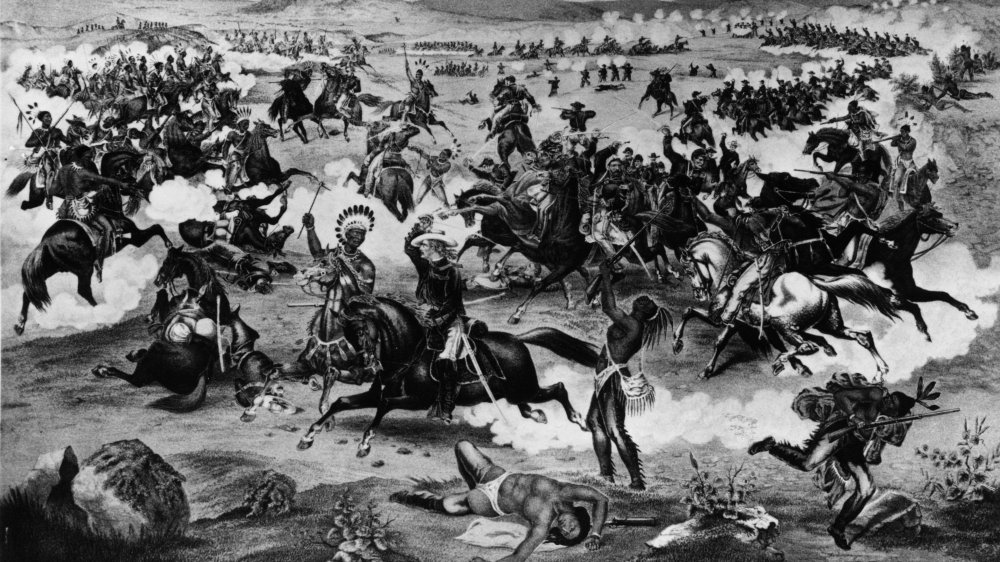The Tragic Death Of Crazy Horse
For late-19th-century settlers born in the United States, the Black Hills of present-day South Dakota were a literal goldmine. But for Crazy Horse, who was born in the Black Hills, according to History, they were home. So when nugget-grubbing settlers set out to grab those lands, the fabled Sioux warrior didn't take it well. Moreover, he had legal grounds to object. Per Smithsonian, the 1868 Treaty of Fort Laramie gave the western half of South Dakota to the Sioux and Arapaho tribes. That half included the secretly lucrative Black Hills. However, in 1874, an expedition led by General George Custer uncovered gold, according to Black Hills Visitor. Suddenly, the U.S. government's word was as good as fool's gold.
Settlers swooped in to illegally pillage the Hills. By January 1875, the number of miners had swelled to 15,000. That same year, the U.S. Senate offered $6 million for the Hills. But in the words of Crazy Horse, "One does not sell the earth upon which the people walk." Tensions escalated as settlers and outlaws attacked Native Americans. In 1876, the U.S. ordered the Sioux to move to a reservation. The Sioux refused, putting them on a collision course with the U.S. military. Luckily for Crazy Horse, this wasn't his first rodeo.
Let slip the Horse of war
Crazy Horse was no stranger to danger, and by 1876, he was certainly no stranger to fighting U.S troops. As described by the Wyoming Historical Society, in 1866, the U.S. pursuit of gold in the Montana Territory placed the forces of notorious Civil War general William Sherman on a collision course with Crazy Horse. Sherman's incursion into Native American land incurred the wrath of Chief Red Cloud. During one of the clashes in Red Cloud's War, Crazy Horse lured Captain William Fetterman and 79 other soldiers into an ambush. According to History, the soldier's corpses were hacked to pieces "to send a message to Sherman."
Crazy Horse galloped into battle against U.S. troops again in 1867 and 1872. The following year, he had his first battlefield encounter with General George Armstrong Custer. They would meet again in 1876 at the Battle of Little Bighorn. During this historic showdown, Crazy Horse led about a thousand warriors and flanked the ill-fated general in what would be Custer's Last Stand. Custer and men were massacred in what History calls "the worst defeat of the U.S. Army in its long history of warfare with the Native Americans."
Hellbent on retribution, Colonel Nelson Miles hunted Crazy Horse and his tribe. Famine and freezing temperatures forced the warrior chief to turn himself in at Nebraska's Red Cloud Indian Agency in 1877. But even in this weakened state, he resisted imprisonment. In a cruel twist, one of his old friends, Little Big Man was one of the police officers tasked with placing Crazy Horse behind bars. Crazy Horse revealed a concealed knife but before he could plunge it into Little Big Man, a soldier bayoneted Crazy Horse, who died later that night.

